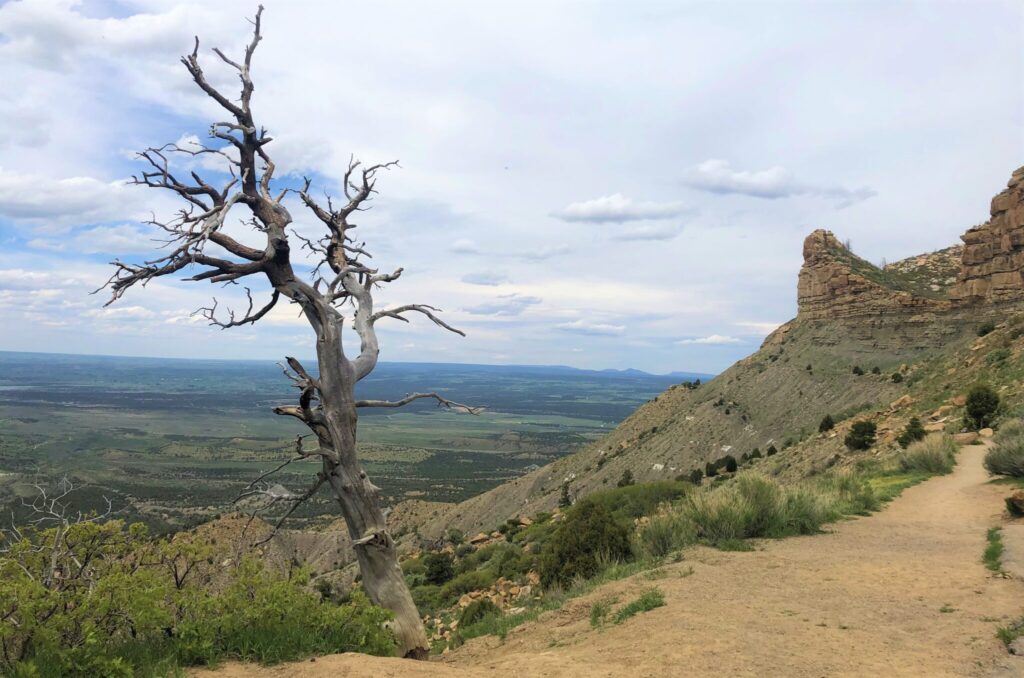
Having lived in the upper Midwest for the first three decades of my life, I’m no stranger to bad weather. I’m used to freezing winters, pop up storms, and general unpredictability. In Michigan we had the “unique” saying that if you don’t like the weather, wait five minutes. I later learned that they say this just about everywhere, but at the time it seemed apt. However, I think living in California for the last decade has really warped my viewpoint. In Silicon Valley, May is basically summer (if it didn’t already start in April). While I’m aware that’s not the case in most places, I really thought that it would at least be spring and we would be able to enjoy ourselves outside, even at elevation or higher latitudes. As you may suspect, this turned out to be extremely naive, at least outside of Utah.
After saying a tearful goodbye to Moab, we drove a few hours southeast to Colorado to see Mesa Verde National Park and its numerous preserved cliff dwellings of the native Pueblo people. This time there were plenty of camping spots available. Although I suspect this was at least partially due to people having viewed the weather forecast. Our timing was also off just a little bit, as a couple of the main cliff dwellings that allow for tours were not open for the season for another week. This caused a backup in available tours, with same day tours being sold out. But we booked our ticket for a tour of the most popular and largest one for the next day, set up camp, and then went to explore the park.
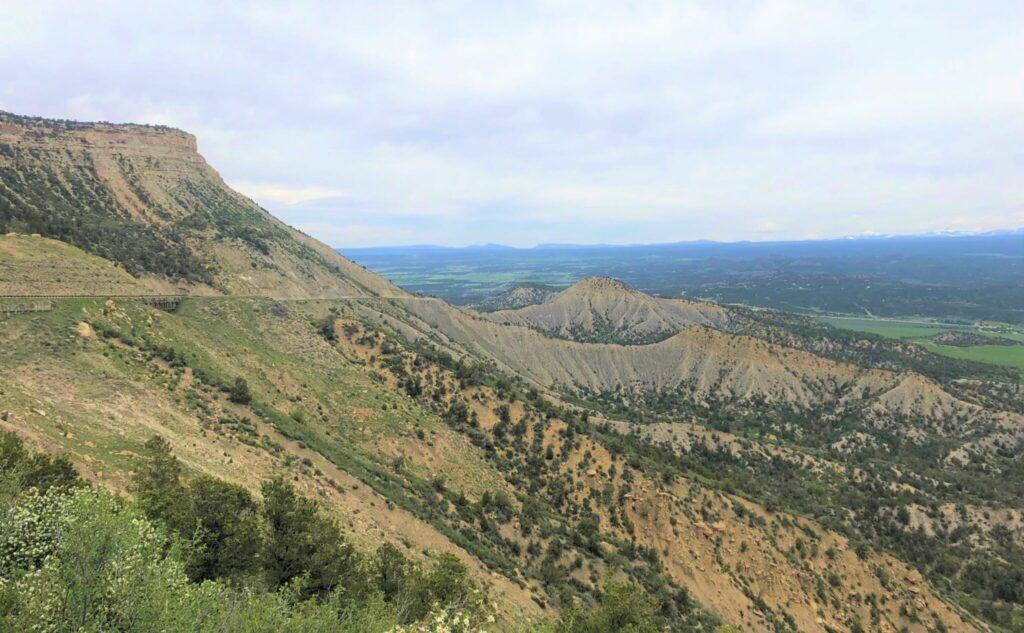
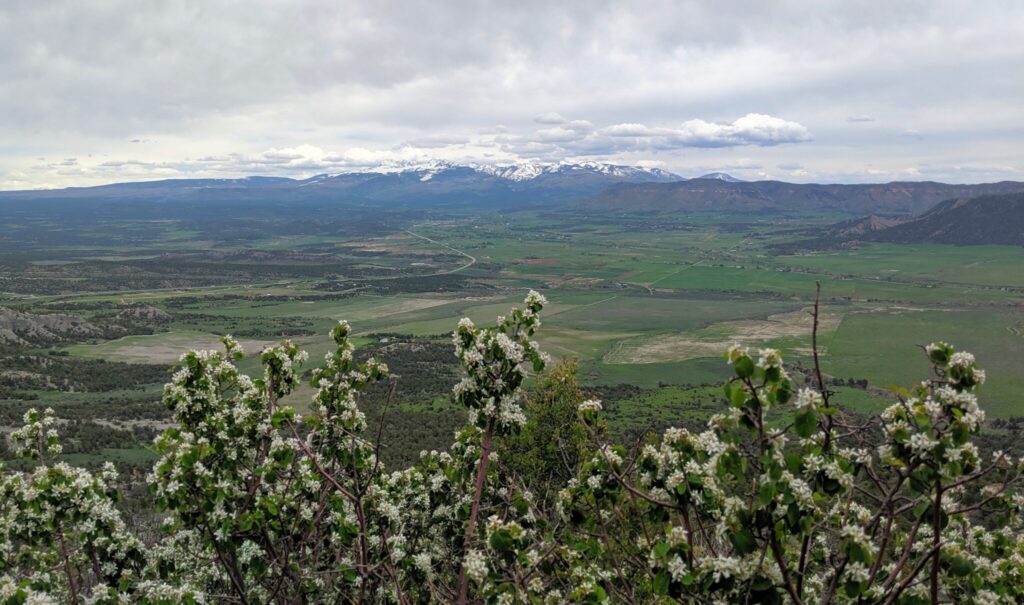
The park itself is situated on the top of a large mesa surrounded by flatter land. We learned that during the warmer months, the park area is under a nearly constant threat of wildfire due to the landscape and elevation. There are numerous wildfire scars throughout the park and large fires happen relatively frequently. Apparently in the summertime, air conditions can be dry enough that rain from thunderstorms evaporates before it hits the ground, but of course the accompanying lightning is not so cooperative. As you can imagine, lightning without rain can result in dangerous conditions. What it also results in is a weird post-apocalyptic landscape, especially when it’s combined with brooding clouds.
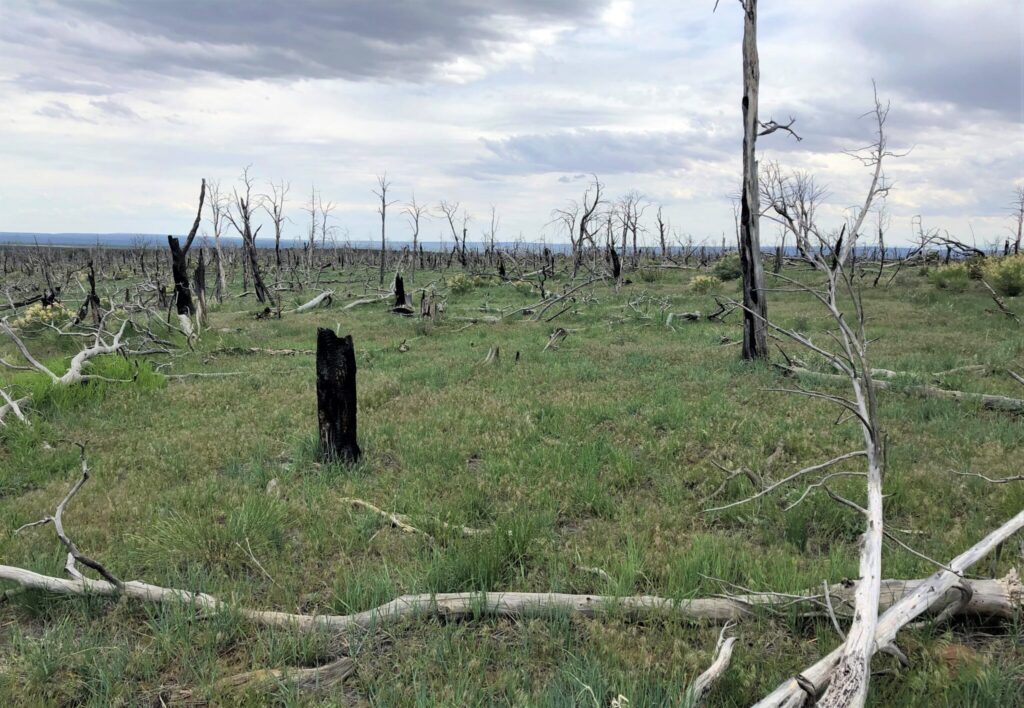
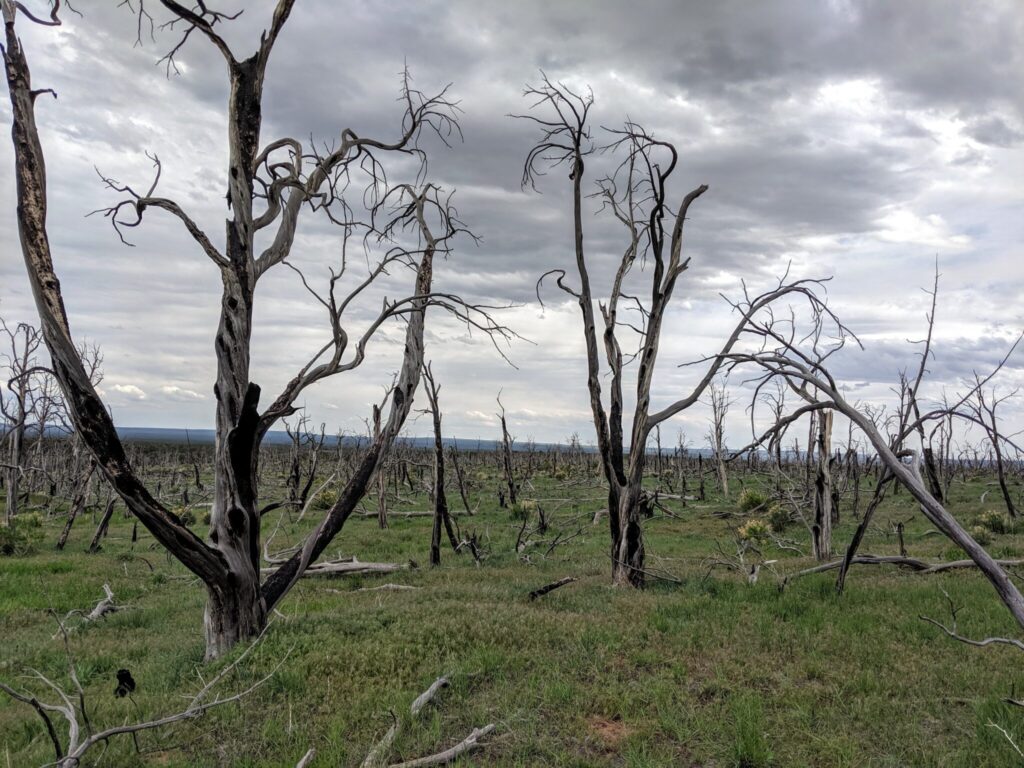
While a lot of the tours of the cliff dwellings were still closed, they were all viewable from afar. They were definitely pretty cool looking. I immediately started imagining what it would be like to live in a small village on the side of a cliff. While no one knows for sure why the native people decided to do this, I’ve concluded that it was likely done in an effort to escape the weather, especially the wind. Being on top of a mesa, it seems to be windy most of the time. And while that was somewhat cold and unpleasant in May, getting out of the wind would be an absolute necessity in the winter months.
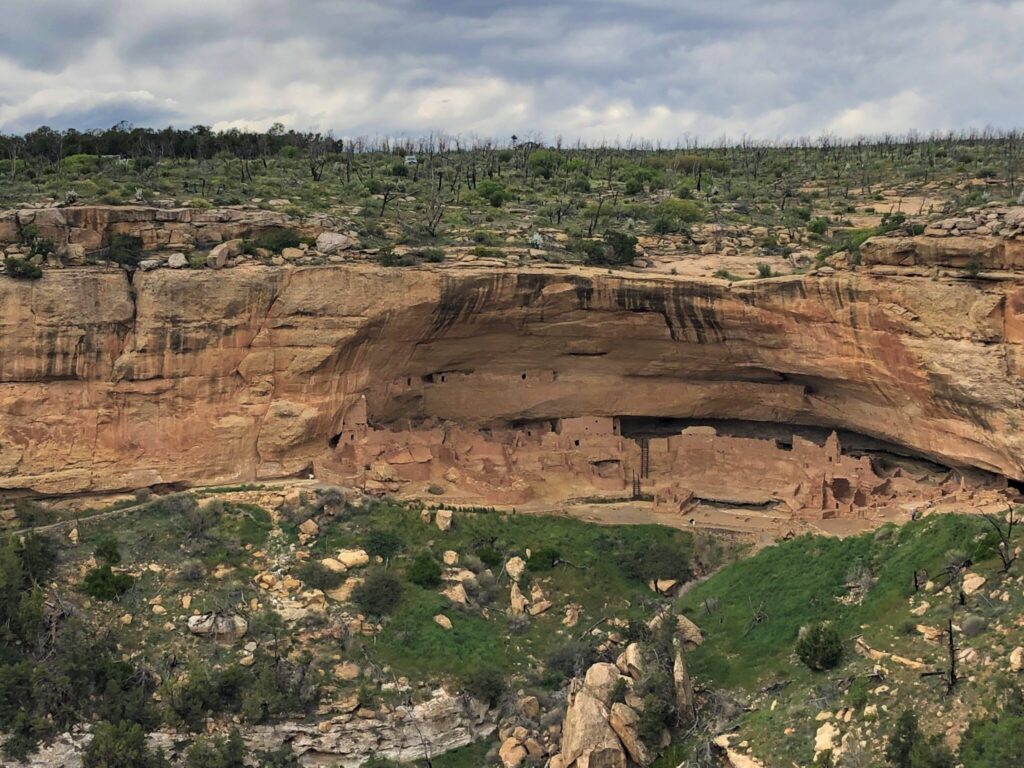
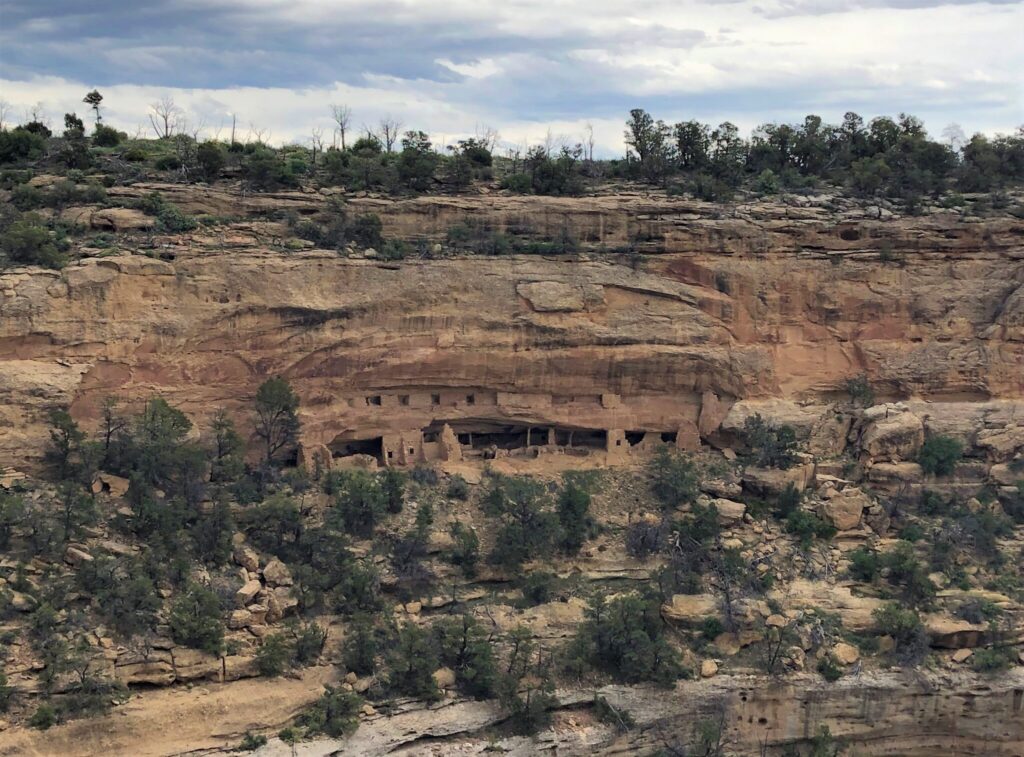
We had planned to camp for two nights here, but since the campground was half empty and the weather was turning colder, we started by booking only one night to see if we were tough enough. Despite being mid-May, overnight lows were barely into the 30s. It was pretty darn cold, but we mostly did okay overnight. Then in the early morning, the thunderstorms came. Unlike in the summer, the rain from these thunderstorms did not evaporate before hitting the ground and we got dumped on. Maybe I’m just a big wimp, but laying in a tent on the top of mesa and listening to thunder and lightning crack all around me was a bit of a hair raising experience.
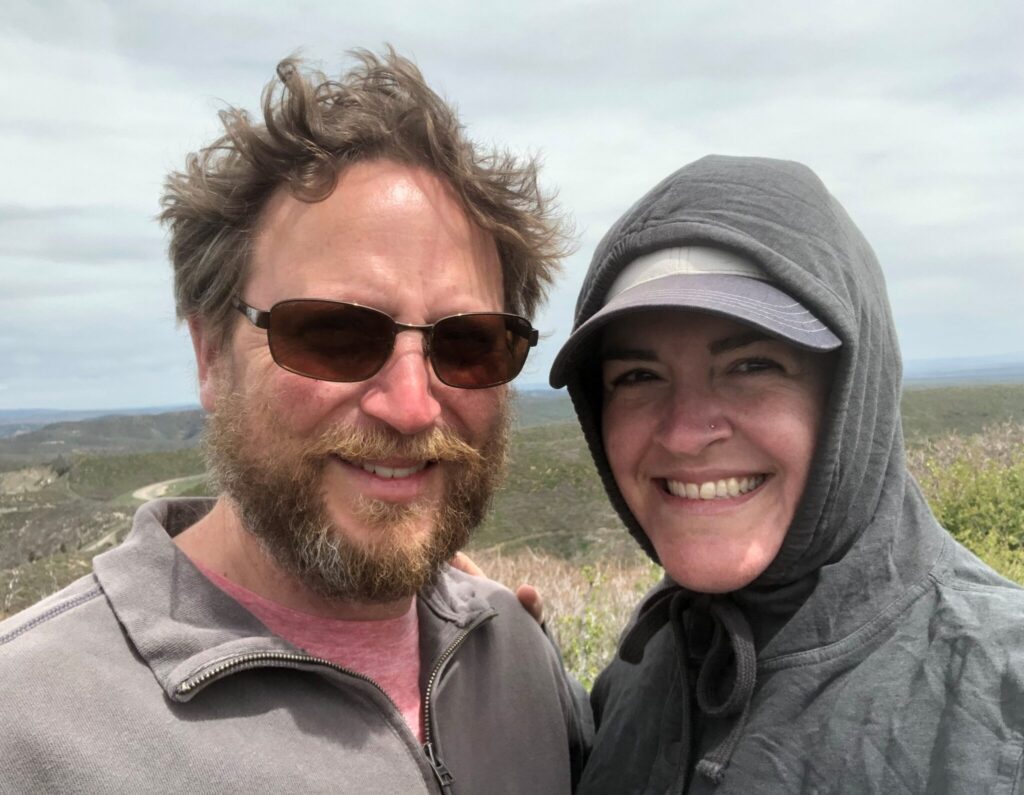
As such, we were cold, damp, scared, and mostly unhappy. I don’t want to start our retirement dead! Since the storms were supposed to continue for most of the day, we concluded that we’d had enough. Luckily there was a brief window between storms and we used that to pack up camp. We decided to be satisfied with our cliff dwelling experience from afar, gave our tour tickets to an appreciative young couple, and hit the road.
We stopped in Durango for a nice hot breakfast and used the time to warm up and the wifi to plan our next stop. We needed to head north or northeast and the weather forecast was not great no matter how many hours we were willing to drive. Instead of being wet and miserable, we abandoned the camping idea to find a place to stay with heat. While the weather didn’t want to cooperate, our timing for finding a place to rent in the ski towns of the Colorado Rockies couldn’t have been better. No one is skiing anymore and it’s not summer yet, so it’s definitely the off season, or to use the local vernacular, mud season. As such, we had a number of reasonably priced condos to choose from on Airbnb and found a nice one bedroom condo with a stocked kitchen, leather furniture, fireplace, and balcony for less than $100/night in Avon. Sure beats a hotel both in price and amenities.
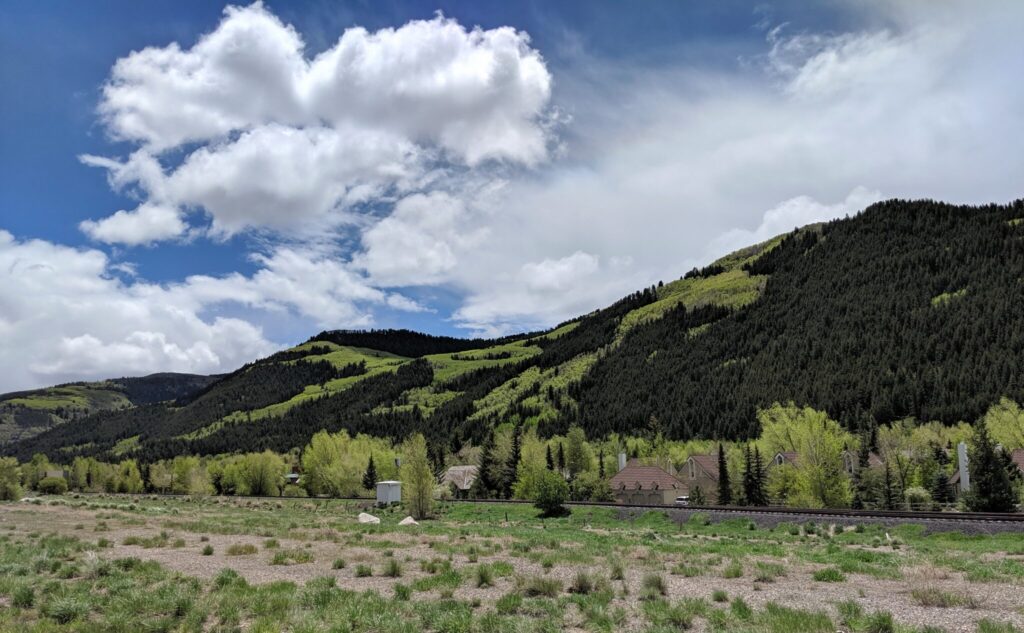
We had three nights and two days to explore Avon and the surrounding area. Avon is a nice little town, with an excellent walking path along the Eagle River which runs through it. It also has a large grocery store, a Walmart, and other conveniences like that which are lacking in the more quaint ski towns. We also decided to visit Breckenridge, which included a stop at the Breckenridge Brewery. And last we stopped in Frisco to explore the small downtown. Nearly all of these felt sleepy and many of the stores were closed for mud season, but we still had a nice time strolling through the downtown areas.
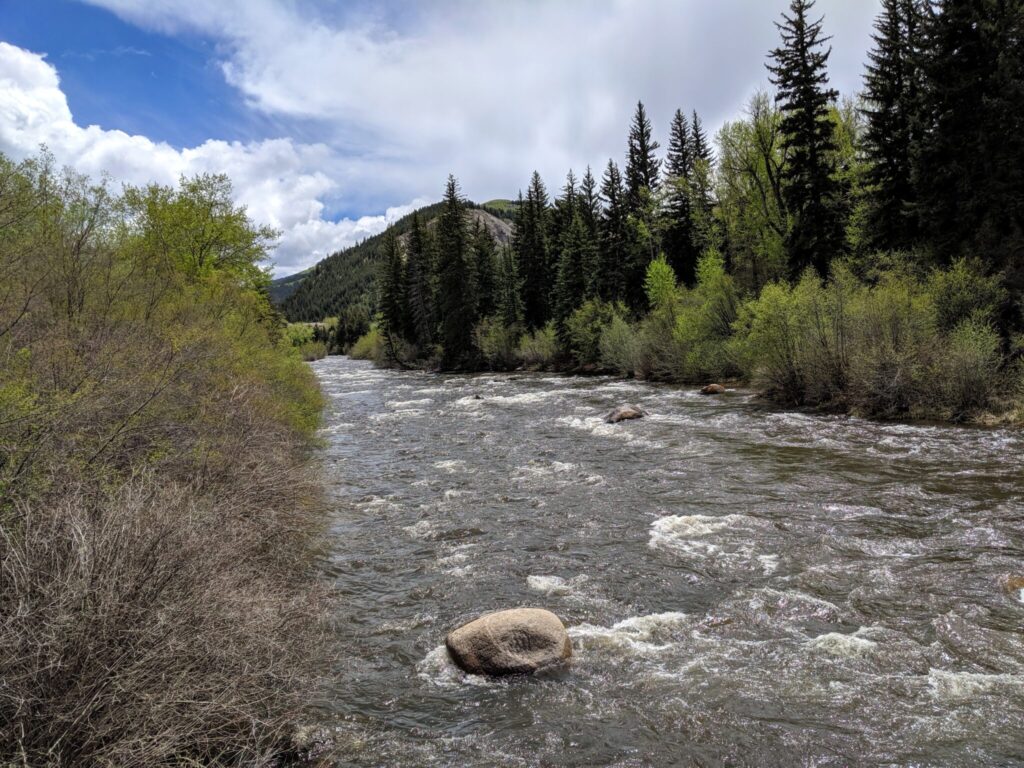
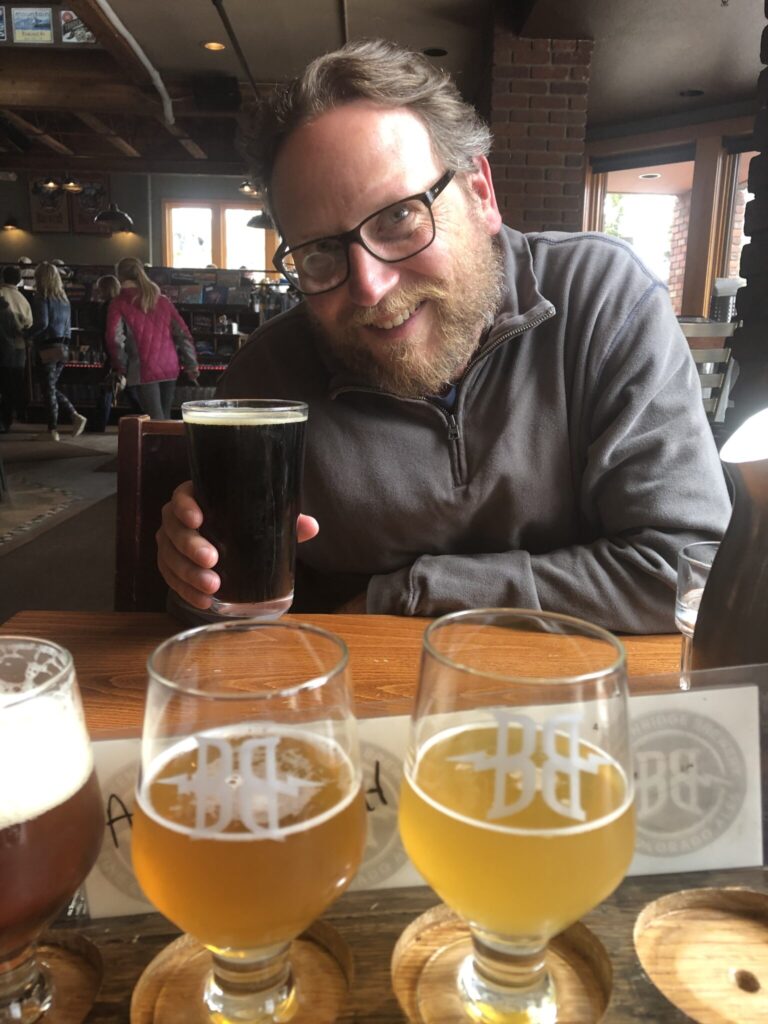
Our three nights went fast, and we did see snow at least once everyday, which made us happy that we decided to not try to camp through it. On our departure day, there was a winter storm warning predicted to be especially bad at elevations that we were at, so we got up early to get on the road before the worst of it hit. There was one mountain pass at about 10,000 feet that was a little dicey with near white out conditions, but other than that it wasn’t too bad and we made it out of the mountains to the Colorado plains where it was just cold rain instead of snow. From there we settled in for a long drive headed north through Wyoming and into South Dakota. Goodbye camping, it was nice knowing you.
Leave a Reply